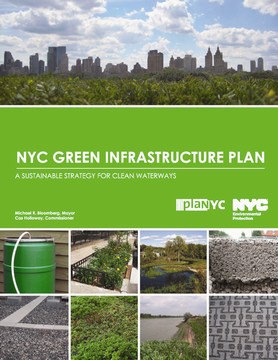Trees grow in Brooklyn: A natural form of relief for overworked city sewers
A Fundamental Shift in Approach
“Like other post-industrial areas in the city, New York’s Gowanus neighbourhood is getting stylish. But those who venture there after a heavy rainstorm might rethink their plans to buy that loft,” states the Economist magazine in an article about New York City's Green Infrastructure Plan.
“When the city’s ageing sewerage system is overwhelmed, untreated storm-water and sewage flood into local waterways, including the Gowanus Canal. The resulting whiff is sure to keep property prices at a level starving Brooklyn artists can afford.”
“New York recently unveiled a grand plan to clean up its waterways. The scheme involves a fundamental shift in approach: instead of treating rainfall as waste to be whisked away as quickly as possible, New York will let it sink usefully into the ground.”
To Learn More:
To read the complete article in the Economist, click on Trees grow in Brooklyn. To download a copy, click here.
About the New York Plan
New York's Green Infrastructure Plan presents an alternative approach to improving water quality that integrates 'green infrastructure', such as swales and green roofs, with investments to optimize the existing system and to build targeted, smaller-scale 'grey' or traditional infrastructure.
This is a multi-pronged, modular, and adaptive approach to a complicated problem that will provide widespread, immediate benefits at a lower cost. The green infrastructure component of this strategy builds upon and reinforces the strong public and government support that will be necessary to make additional water quality investments.
A critical goal of the green infrastructure component is to manage runoff from 10% of the impervious surfaces in combined sewer watersheds through detention and infiltration source controls.

Posted November 2010

